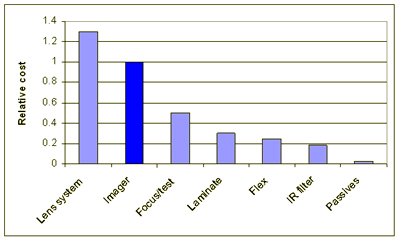In Feruary 2001 ISSCC held a
panel discussion named: "Does Fabless Mean Futureless for Imaging?".
Many industry heavyweights of the time participated there:
Albert Theuwissen, Philips Semiconductors, Eindhoven, The Netherlands
Daniel McGrath, Atmel, San Jose, CA
Hideshi Abe, Sony, Kanagawa, Japan
Ed Chen, TSMC Hsin-chu, Taiwan
Bedrich Hosticka, Fraunhoffer Institute, Duisburg, Germany
Jed Hurwitz., St. Vision, Edinburgh, UK
Sabrina Kemeny, Photobit, Pasadena, CA
Woodward Yang, Harvard, Cambridge, MA and Hyundai, Korea
Interesting to see that now, almost 6 years later, the question is still un-answered.
Fabless Omnivision is still #1, even though Micron is about to overtake it.
Atmel mostly abandoned the IDM model for fabless in image sensors.
IDM Hyundai went through the number of spin-offs and re-orgs, but it did not add the market share to its far descendant IDM Magnachip.
IDM Sony is still a very minor player in CMOS image sensors, despite many years of efforts and investments. Most of its market share comes from CCD.
IDM Philips has never been able to capture a significant share of the CMOS sensors market. After a big mishap when supplying sensors to Motorola, Philips abandoned CMOS image sensors and sold its CCD and CMOS sensors business to DALSA.
All in all, it looks now that the quality of team matters more than IDM or fabless nature of the company. A company having the best team wins in any type of model.







